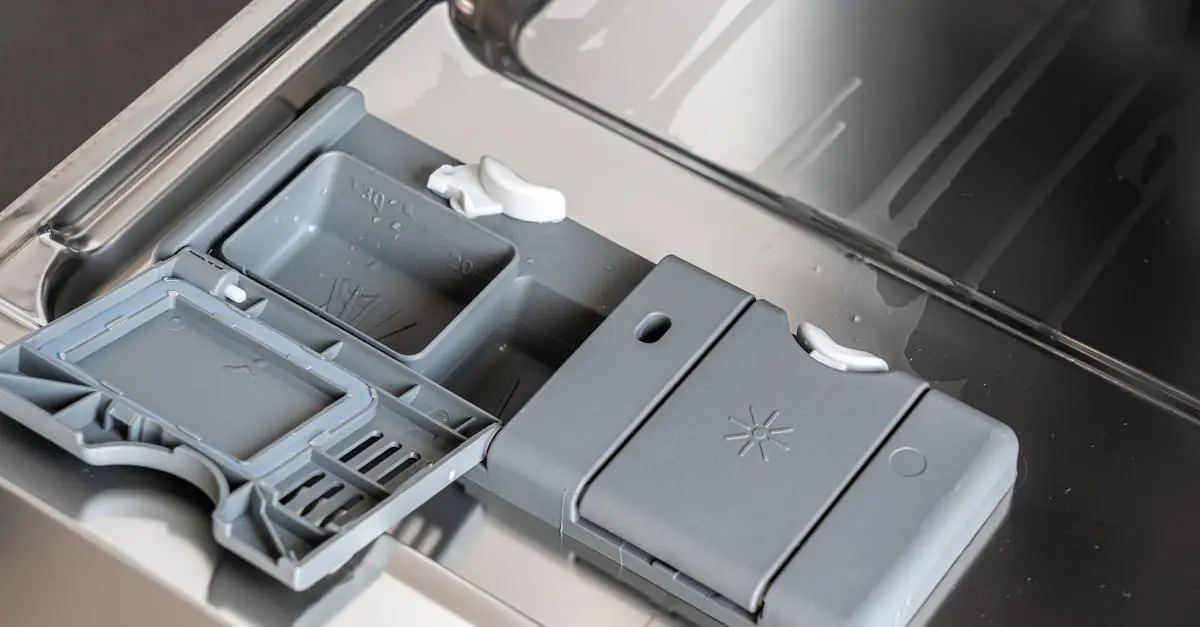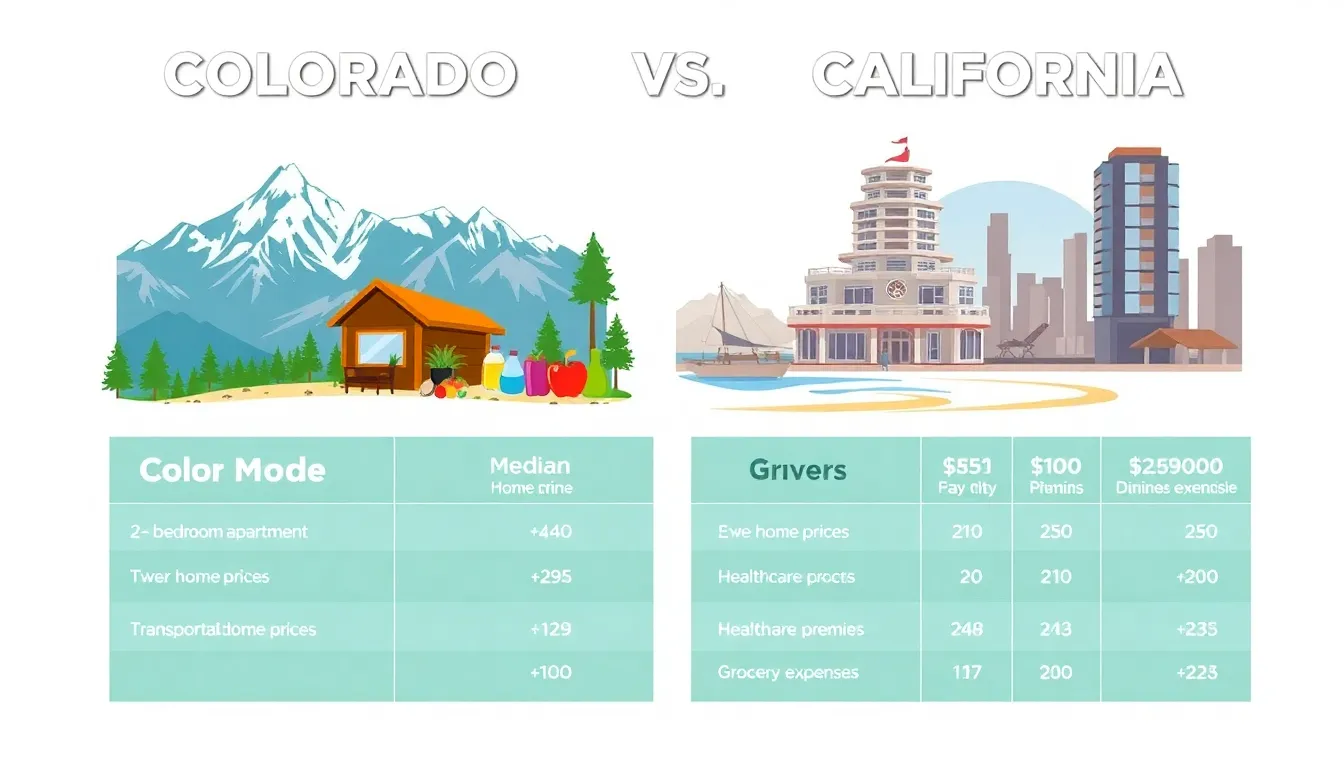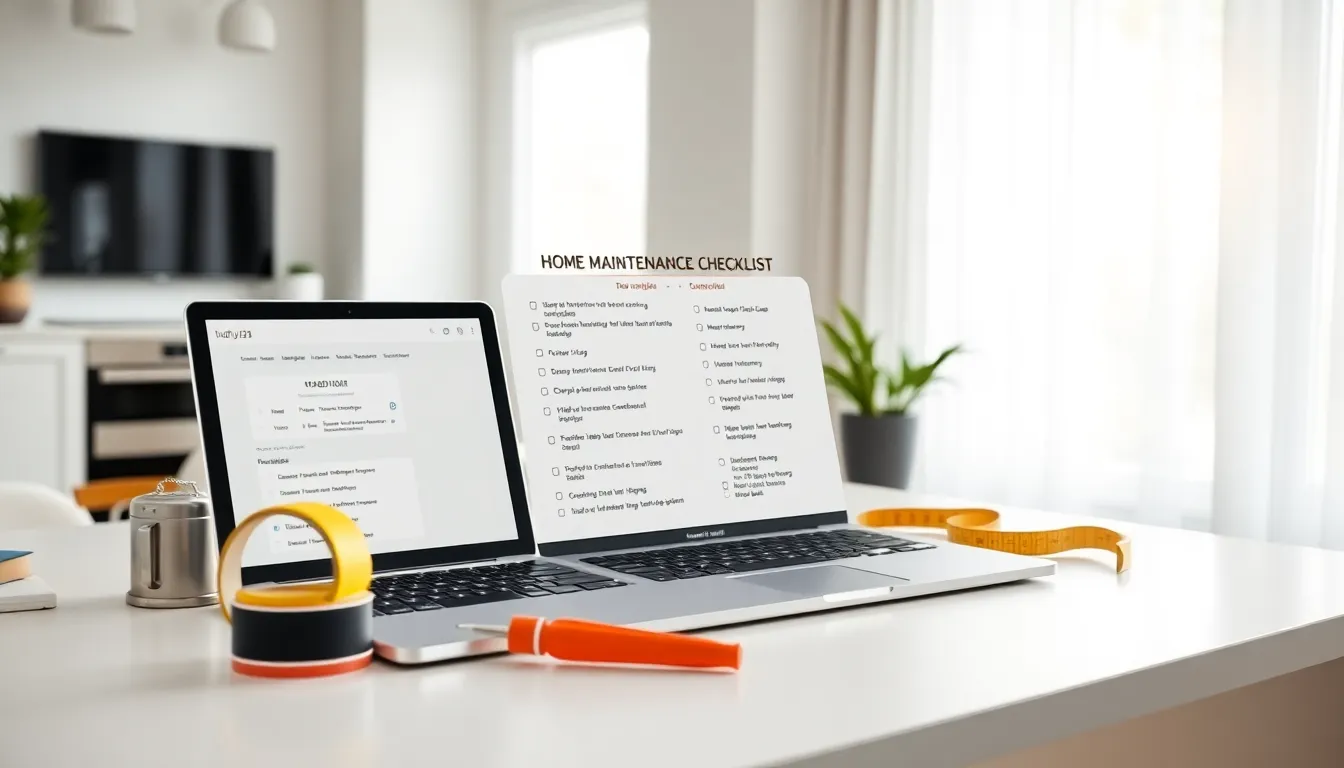Table of Contents
ToggleA well-maintained kitchen is like a well-oiled machine—without it, chaos reigns supreme. Picture this: you’re ready to whip up a culinary masterpiece, but instead, you’re faced with a sink full of dishes and a fridge that could double as a science experiment. Fear not! With the right kitchen maintenance checklist, you can transform your cooking space from a disaster zone into a chef’s paradise.
Importance Of A Kitchen Maintenance Checklist
A kitchen maintenance checklist plays a crucial role in the functionality of a home. This tool helps homeowners keep track of vital tasks, ensuring each aspect of the kitchen receives proper attention. Regular upkeep improves hygiene and enhances efficiency, enabling a smooth cooking experience.
Effective organization fosters a pleasant cooking environment, eliminating distractions that clutter can create. Establishing a routine through a checklist reduces the chances of neglecting important tasks. Tasks like checking for expired ingredients, cleaning appliances, and organizing storage areas significantly enhance kitchen operations.
Health and safety considerations also come into play. A well-maintained kitchen minimizes hazards like pests and food contamination. Regular cleaning of surfaces and equipment contributes to a safe cooking space and influences overall family health.
Budget management is another benefit. Maintenance checklists promote timely repairs, preventing costly surprises. Investing time into regular upkeep maximizes the lifespan of appliances and fixtures, translating into financial savings over time.
Lastly, the checklist empowers individuals to personalize their kitchen maintenance routine. Each kitchen has unique needs, and flexibility in adjusting the checklist supports tailored care. Prioritizing regular kitchen maintenance transforms an ordinary cooking area into a well-organized, enjoyable space for culinary exploration.
Essential Components Of A Kitchen Maintenance Checklist
A comprehensive kitchen maintenance checklist incorporates various tasks essential for optimal functionality and hygiene. Homeowners benefit greatly from establishing a routine that includes daily, weekly, and monthly tasks.
Daily Tasks
Daily tasks focus on maintaining cleanliness and efficiency. Washing dishes prevents the buildup of grime, while wiping down countertops ensures a hygienic preparation area. Checking for expired items in the fridge avoids the risk of spoilage. Emptying the trash keeps odors at bay and reduces pest attraction. Sweeping the floor helps maintain a clean environment, making it inviting for cooking.
Weekly Tasks
Weekly tasks enhance organization and deep cleaning. Cleaning out the refrigerator thoroughly eliminates unwanted odors and potential contamination. Keeping stovetops and ovens clean improves functionality and promotes health. Checking pantry items ensures that nothing is expired, fostering better meal prep. Mopping the floors goes a long way in maintaining cleanliness and hygiene throughout the kitchen.
Monthly Tasks
Monthly tasks address deeper maintenance needs. Inspecting appliances for wear and tear prolongs their lifespan. Defrosting the freezer helps improve efficiency and prevents buildup of ice. Deep cleaning behind and beneath appliances eliminates trapped dirt and pests. Checking smoke detectors and fire extinguishers enhances safety measures in the kitchen. Organizing kitchen tools and utensils promotes easy access and a clutter-free cooking environment.
Tools And Supplies Needed
Maintaining a well-organized kitchen requires specific tools and supplies. A well-stocked kitchen maintenance toolkit can significantly streamline tasks.
- Cleaning Supplies
Keep multi-surface cleaners, sponges, and microfiber cloths handy for daily wipe-downs. Disinfectants ensure surfaces remain free from harmful bacteria.
- Waste Management Tools
Invest in trash bags and a compost bin for efficient waste disposal. A recycling container keeps materials organized and environmentally friendly.
- Organizational Tools
Drawer organizers help categorize utensils and tools, enhancing accessibility. Storage bins for pantry items prevent clutter and simplify ingredient management.
- Appliance Maintenance Supplies
A vacuum cleaner with attachments aids in cleaning around and behind appliances. Replace filters for air purifiers or range hoods regularly to ensure optimal performance.
- Safety Equipment
First aid kits address minor injuries promptly while fire extinguishers mitigate potential fire hazards. Smoke detectors maintain a safe kitchen environment.
- Inventory Management Tools
Use a notepad or mobile app to track pantry items and expiration dates effectively. This practice promotes timely use of ingredients, minimizing waste.
- Basic Tools
Including a screwdriver set and pliers for minor repairs are essential. Keep a tape measure on hand for accurate sizing of storage solutions.
Equipping the kitchen with these tools and supplies fosters a proactive maintenance routine. Prioritize obtaining each item based on personal kitchen needs and the frequency of use.
Tips For Staying Organized
Staying organized in the kitchen requires a strategic approach. Implementing a daily routine fosters consistency. Create a designated space for frequently used items like spices, utensils, and pots. Categorizing items streamlines meal prep.
Adopting a color-coded system for pantry items enhances visibility and access. Use labels on containers, allowing quick identification of ingredients. Regularly checking expiration dates ensures that expired items are discarded promptly.
Utilizing storage solutions like stackable bins helps maximize shelf space. Invest in drawer organizers to keep drawers tidy and accessible. Maintaining cleanliness by wiping surfaces after each use prevents mess from accumulating.
Scheduling weekly deep cleaning sessions promotes a thorough maintenance routine. Focus on cleaning appliances, such as the oven and microwave, to maintain their efficiency. Mopping the floor weekly also ensures a hygienic cooking environment.
Monthly assessments can identify areas needing improvement. Inspecting tools and equipment for wear prolongs their lifespan. Arranging a cleaning checklist reinforces accountability, making it easier to track completed tasks.
Using a maintenance app simplifies task management and sends reminders for routine chores. Embracing technology can enhance efficiency and organization in the kitchen. By practicing these tips, individuals can cultivate an organized cooking space that supports culinary creativity.
A well-maintained kitchen is essential for fostering creativity and efficiency in cooking. By following a structured kitchen maintenance checklist, individuals can ensure their cooking spaces remain organized and hygienic. This proactive approach not only enhances the cooking experience but also promotes health and safety for the entire family.
Incorporating daily, weekly, and monthly tasks into a routine helps prevent clutter and keeps appliances in top condition. With the right tools and strategies in place, anyone can transform their kitchen into a welcoming environment. Embracing these practices leads to a more enjoyable culinary journey and ultimately saves time and money in the long run.







